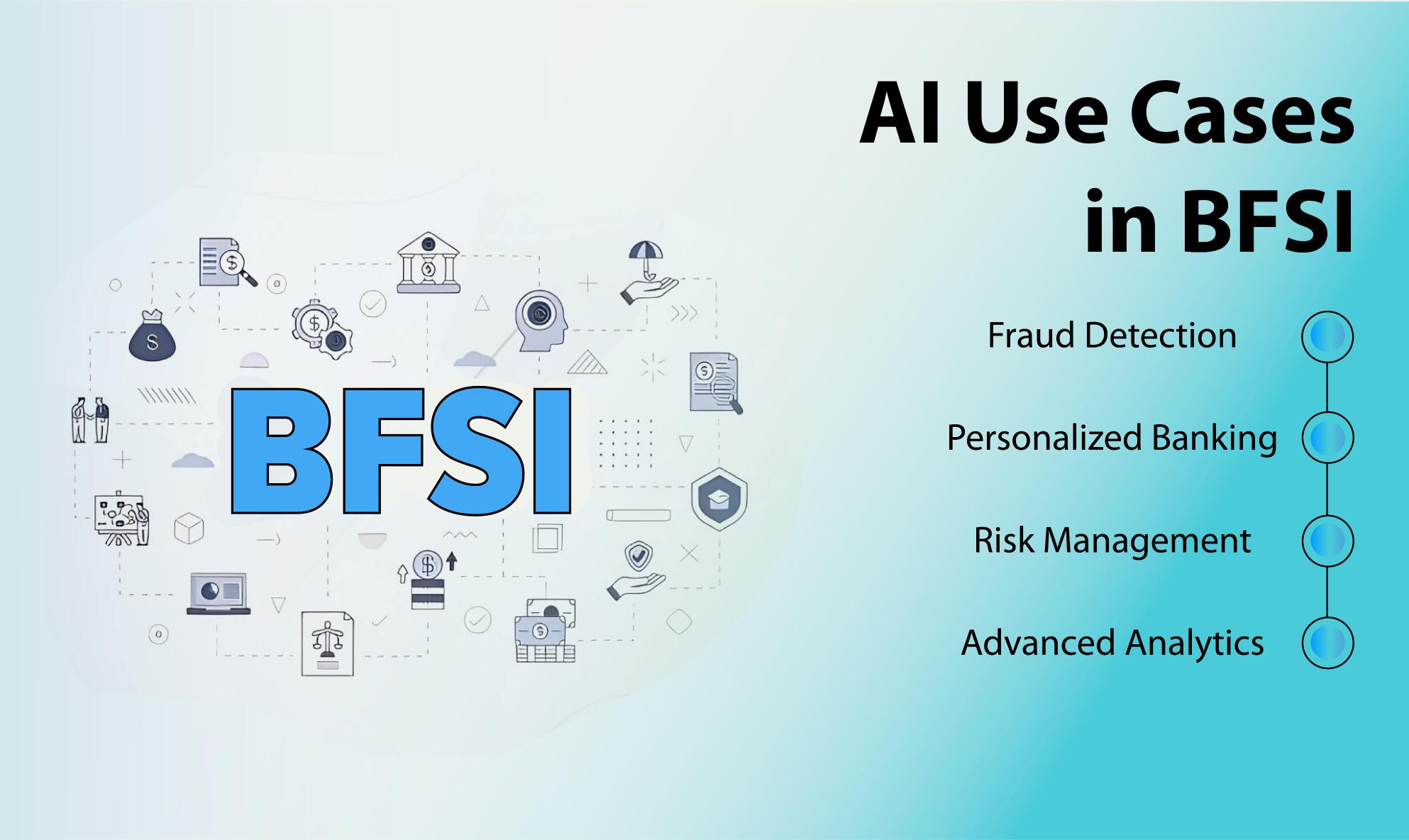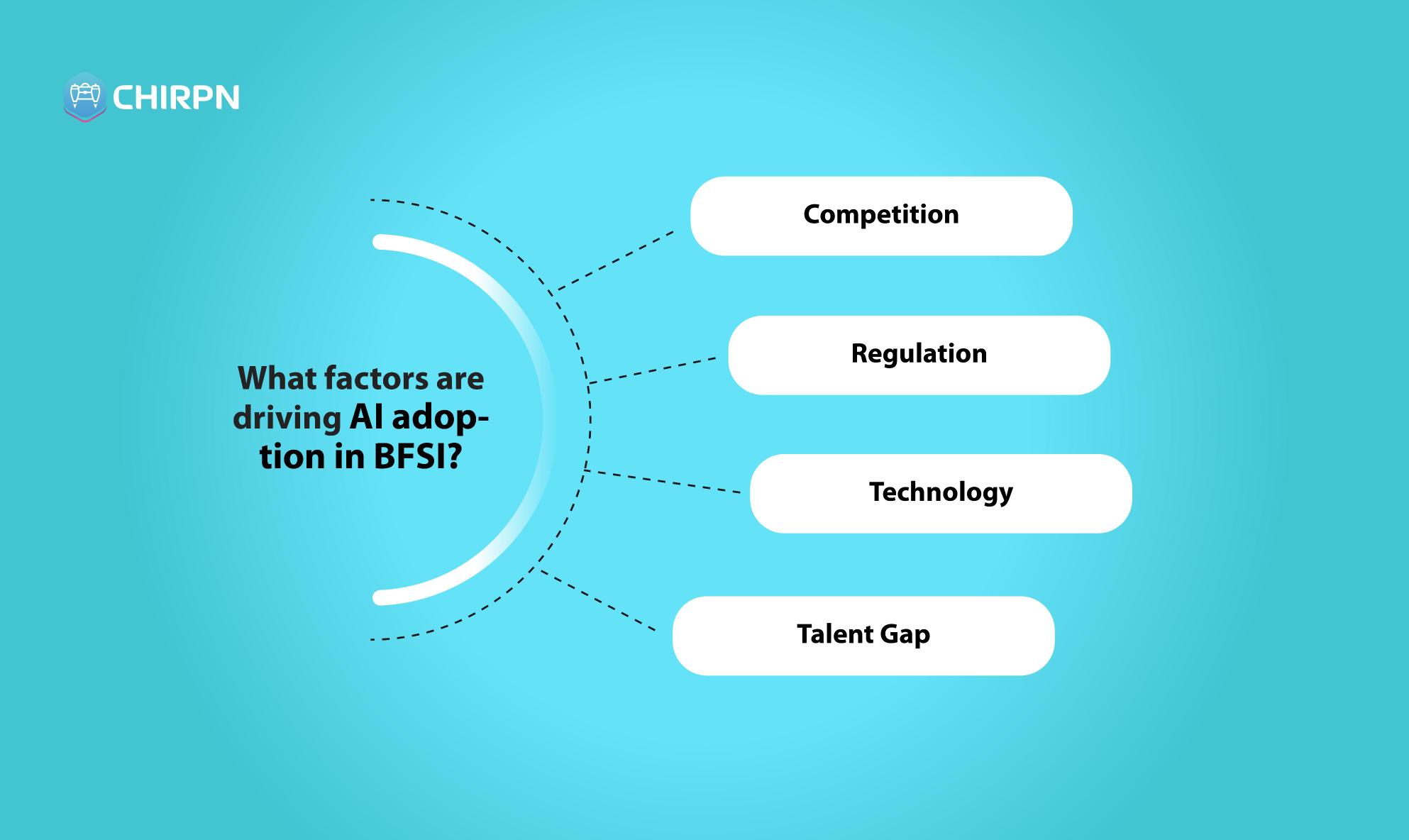A recent study indicates that AI in banking and finance is not a novelty concept anymore. After retail, manufacturing, and travel, BFSI has wholeheartedly supported AI adoption. The legends of this industry such as Bank of America, and JP Morgan are already reaping the benefits. They are offering their services at 2x efficiency without ever compromising on customer experience. But a small percentage of brands are still hesitant about it, which we want to dispel. This article will take a nose dive on the subject, what the industry is thinking, benefits, and the factors driving the adoption.
What does the industry say about AI adoption?
The consensus in the banking and financial sector is positive regarding AI adoption. Nearly three-quarters of experts believe that AI would improve productivity and help with fraud detection. 40% of executives think this technology would be responsible for tactical decision-making, thus freeing employees from mundane tasks. We asked them about their goals for AI adoption, and here are their answers:
- 70% said that they want to personalize their post-sales and marketing efforts with AI in addition to chatbots
- 25% mentioned chatbots for offering customer support
Use Cases of Artificial Intelligence in BFSI

Fraudulent Activity Detection
Fraudulent activities in banking, such as identity theft, credit card fraud, and money laundering, are common. 2024 has proved that AI in banking can reduce such incidents, and 60% of banks agree. They have started using AI to detect patterns, identify suspicious activities, and minimize damages regarding customer funds and assets. JP Morgan Chase is a wonderful example of this case. The management uses AI to check financial transactions and look for irregularities.
Monitoring transactions
Banks can analyze a customer’s transaction history to recommend specific products, such as savings accounts or investment opportunities that align with their financial goals.
Chatbots like Erica from Bank of America provide instant support and advice. They can answer questions about account balances, and transaction histories, or even suggest budgeting tips based on spending patterns. This level of personalization makes customers feel valued and engaged, enhancing their overall banking experience.
Moreover, AI can segment customers into different categories based on behavior and preferences. This allows banks to send targeted marketing campaigns, ensuring that customers receive relevant offers at the right time. The result? Higher engagement rates and improved customer loyalty.
Risk Management and Credit Scoring
Banks are offering risk management and credit scoring, as a part of their banking as a service. So what gives? Why do they need to invest in AI?
Nowadays, banks have to deal with Big Data (unstructured data), and its not feasible to use legacy systems to handle that. AI can be used to check credit assessments for a larger customer base. It can go through details traditional systems might fail to check, like potential borrowers with somewhat limited credit history but ample payment capacities.
AI in banking can evaluate metrics such as payment history, income stability, utility bills and even social media activity. This paints a clear picture of the borrower, one that is more accurate. With AI, banks can make better decisions regarding lending money. It can predict different scenarios based on market shifts, allowing organizations to mitigate risks beforehand, or during regulatory changes.
Advanced Analytics and Decision Making
AI digs deep into data for actionable insights that drive strategic decisions. Predictive analytics allows banks to forecast trends based on historical data patterns. For example, banks can identify which products are likely to be popular in the coming months or detect shifts in customer behavior due to economic changes.
With these insights, financial institutions can tailor their offerings to meet emerging demands. They can also optimize their marketing strategies by targeting specific demographics or regions that show potential.
Moreover, AI helps in risk assessment by analyzing market conditions and customer behaviors simultaneously. This dual approach enables banks to make informed decisions quickly, ensuring they remain competitive in a rapidly changing landscape.
Extensive Customer Support

AI chatbots are transforming customer support in the BFSI sector. Available 24/7, they handle routine inquiries instantly, whether it is checking account balances or providing transaction details. This immediate response significantly improves customer satisfaction.
Chatbots can also learn from interactions over time, becoming more effective at understanding customer needs and preferences. They provide consistent service quality while reducing wait times for customers who need assistance. Digital banking companies use chatbots to focus on simple tasks, and deploy their human agents for more sophisticated tasks. The dual approach help financial services to customers with AI and investment banking.
What factors are driving AI adoption in BFSI?

Companies cannot suddenly migrate from one technology to another for a hunch. The management analyzes the drivers or factors that propels the tech adoption. In BFSI, these factors are competition, regulatory requirements, availability of advanced technologies, and talent acquisition challenges. Till now, we have discussed the role of AI in banking, now let us figure what is driving it.
Competition
Traditional banks are facing challenges from their agile and digital counterparts. If they want to continue their “banking as a service”, they need to adapt and innovate. AI is the primary contender for this, as it provides a way to offer innovative offerings and boost operational efficiencies. Chatbots are one of the prominent examples of this, they are used to provide personalized financial advice. This helps banks to aggressively differentiate themselves from the rest.
Regulatory Pressures
The BFSI industry is one industry where non-compliance can result in hefty consequences. Here are some of the regulations banks need to comply with, data privacy, anti-money laundering and consumer protection laws. However, AI in banking and finance can be used to automate and monitor compliance processes for better risk management. With this technology, banks can track suspicious transactions, thus enhancing regulatory compliance.
Technological Advancements
AI is quite accessible in sharp contrast to how it was two years before. Advanced machine learning and natural language processing algorithms are crucial in driving the adoption rate in BFSI. Aside from that, other technologies like cloud computing also helped in the popularity of AI. This motivated banks and other financial organizations to stay at the forefront and bring innovative solutions to customers.
Talent Acquisition Challenges
BFSI, like any other industry, struggle with talent acquisition and retention. This leaves a gap, which can be fulfilled with AI technologies. Also, it is not a good idea to stay behind competitors, and lose relevance.
This challenge drives financial institutions to invest in upskilling their existing workforce while also seeking partnerships with educational institutions or tech firms to bridge the skills gap. Additionally, organizations are increasingly recognizing that cultural change is essential for successful AI implementation. They must foster an environment that embraces technology and encourages continuous learning among employees.
As you can see, banking and AI are not two separate entities, they will be complementary to each other. AI can drive innovation, a positive customer experience, and overall productivity. Yes, the lack of right infrastructure and mindset can be detrimental, but these issues can be solved through internal discussions.
At Chirpn, we understand these AI in banking use cases, and that every situation is different. We don’t have a single, one-stop-trick for AI implementation, our experts customize it to fit client requirements. Also, as an AI-first company, we are a big promoter of AI literacy, and helping businesses understand why they need it. We have implemented this technology for other companies, which means we know what challenges to expect. Also, our goal is to deliver the project within given timelines with minimal-to-no friction. If you are looking for a partner driving AI implementation in your bank, we are here for you.

